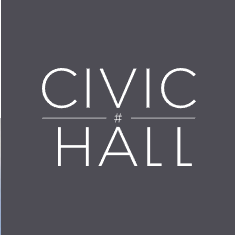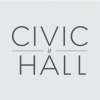How Twitter and CBS Found the ‘Voice of the Crowd’
- CHRISTINE CUPAIUOLO
- December 10, 2015
- 8:26 pm
“For 55 years, we’ve all been yelling at the screens in presidential debates…This is really the first time the screen talked back.”

This is Christine Cupaiuolo’s first report for the Rethinking Debates project. While the vast majority of stories will be about the ways that debate producers around the world are experimenting with using interactive technology and social media to make these events more meaningful and responsive to public concerns, this story highlights an unexpected breakthrough here in the United States: the first time in which a member of the viewing public was able to talk back virtually to the candidates in real-time.
Political debate watchers in the United States have been offered more ways than ever this year to view the presidential primary debates and to interact with the host networks and the candidates.
Yet after six debates—four Republican and two Democrat—and tens of thousands of questions submitted via Facebook and Instagram, real-time opinion meters and polls, streaming Twitter reactions, live coverage on Snapchat, and livestreaming in virtual reality, only one attempt to engage the public broke through the wall dividing candidates and viewers.
It happened Nov. 14 during the Democratic debate in Iowa, when a real-time comment on Twitter was posed to a candidate. While it took all of eight minutes for debate organizers to select, vet, and read on air a #DemDebate tweet rebuking presidential hopeful Hillary Clinton, it could be argued that the lead-up took decades.
“For 55 years, we’ve all been yelling at the screens in presidential debates,” said Adam Sharp, head of News, Government and Elections at Twitter. “This is really the first time the screen talked back.”
CBS, host of the first-ever televised presidential debate in 1960, teamed up with Twitter for the event at Drake University, marking the first time the social media platform was an official partner in a U.S. debate (Twitter has advised other networks hosting debates).
The two media companies started working in tandem over the summer, said Sharp, testing out curation methods during the other networks’ debates and building on ways Twitter has been used in previous election cycles and in other countries.
Past debates, for example, may have included a counter showing number of tweets per minute. This time around, online viewers saw a graphic cycling through the volume of conversation as well as each candidates’ share of the conversation. Visuals also captured the topics people were tweeting about and debate moments that drove conversation (here are the top moments). Twitter collaborated with Postano, a social visualization and measurement platform, to display data on a huge digital video wall in the spin room.
Using Curator — a tool Twitter rolled out earlier this year to help media publishers search, filter and curate tweets for display on web, mobile or TV — CBS producers could select and display a scrolling timeline of tweets that ran alongside the candidates on CBSNews.com.

Photo: @gov

Photo: @gov
“That’s where it started, with the data telling a story,” said Sharp.
As the debate was happening, producers saw a spike around Clinton’s comment linking Wall Street campaign contributions to her work as a senator helping to rebuild downtown Manhattan after 9/11. Sharp said CBS used Curator as well as TweetDeck and Twitter itself to gather perspective on how Twitter users were reacting. Upon noticing that the majority of tweets were highly critical, the search was on for a tweet that would represent the consensus that was forming.
“It was immediately apparent that this was the moment that was driving conversation, this was the moment people were going to be referring to at the water cooler the next day,” said Sharp. “Finding a tweet that referenced that wouldn’t be just picking a face in the crowd, it was actually picking a voice of the crowd.”
Then a comment by University of Iowa law professor Andy Grewal surfaced:
Have never seen a candidate invoke 9/11 to justify millions of Wall Street donations. Until now. @HillaryClinton #DemDebate
— Andy Grewal (@AndyGrewal) November 15, 2015
“I couldn’t believe the tone-deafness,” Grewal later told the Des Moines Register. “I felt compelled to make an actual critical remark.”
Grewal had fewer than 200 followers when producers found the tweet, so it wasn’t the most re-tweeted comment when it drew CBS’s attention (it’s now been retweeted more than 2,800 times and liked by more than 3,000 Twitter users). Being an Iowa voter helped.
“The fact that it came from an independent voter,” added Sharp, “in Iowa City, in his pajamas, who had never live-tweeted an event before, really just highlights, I think, the potential moving forward.”
Before submitting the comment for air, CBS producers had to quickly vet Grewal, verifying his bio and reviewing past tweets for any sign he might be working for another campaign.
“That’s where it gets important to have both that algorithmic layer and that human editorial judgment paired together, but neither can exist without the other,” said Sharp. “The reality is, with many millions of tweets about one of these primary debates, a human without help from the algorithm would drown under the volume. The key is, how do you get them at least to the right part of the haystack so they could start poking around a little bit more.”
The candidates had already moved on from Wall Street contributions and were discussing gun control when the debate moderator, John Dickerson, interrupted them:
JOHN DICKERSON: Sorry, I’m gonna bring in [CBS News Congressional Correspondent] Nancy Cordes with a question from Twitter about this exchange.
(OFF-MIC CONVERSATION)
NANCY CORDES: —about guns but also about your conversation on campaign finance. And Secretary Clinton, one of the tweets we saw—said that I’ve never seen a candidate invoke 9/11 to justify millions of Wall Street donations until now—the idea being that, yes, you are a champion of the community after 9/11. But what does that have to do with taking big donations?
HILLARY CLINTON: Well, I’m sorry that whoever tweeted that had that impression because I worked closely with New Yorkers after 9/11 for my entire first term to rebuild. And so yes, I did know people. I had a lot of folks give me donations from all kinds of backgrounds, say, “I don’t agree with you on everything. But I like what you do. I like how you stand up. I’m going to support you.” And I think that is absolutely appropriate.
The tweet was shown on a screen above the candidates as it was read, making it visible to all debate viewers. Reaction online was swift, with praise coming from other media outlets.
Micah Grimes, social media strategist for NBC Nightly News, tweeted:
CNN’s Brian Stelter, retweeting Grimes, wrote:
Grewal’s tweet led to a short exchange involving Clinton, Sen. Bernie Sanders and former Maryland Gov. Martin O’Malley about Wall Street’s economic and political power. Yet the comment also had a longer-lasting effect, giving the controversy over Clinton’s Wall Street ties more volume and validity in the post-debate narrative.
It was the level of impact Twitter officials had hoped to achieve going into the debate. Sharp said they wanted to show other news outlets that a Twitter-enabled debate could be “meaningful and relevant.”
“For every prior debate since August, [CBS] producers have been using these tools to surface tweets around those debates. They have a very good handle of what type of content and what quality they’d be able to raise during their own broadcast,” said Sharp.
“And now, undoubtedly, producers of future debates know, Oh, I can get a great question from Twitter, and I can get it in real-time. I don’t have to either take something stale that’s weeks old, or something that’s more stunty or kitschy, because that code’s now been broken, if you will.”
(In other words, there would be no doubt about the appropriateness of the question, the way there was, say, in 1994, when President Clinton was asked “boxers or briefs” during a MTV town hall. Answer: “Usually briefs. I can’t believe she did that.”)
DISMANTLING THE DEBATE DIVIDE
Yet we still have a ways to go in U.S. political debates before technological innovation revolutionizes public engagement. Jennifer Stromer-Galley, a professor at Syracuse University and author of “Presidential Campaigning in the Internet Age,” cited numerous factors that deter innovation—including risk-averse candidates used to controlling everything from podium height to lighting, and news outlets that see themselves as solely responsible for pressing candidates on tough issues and deciding which questions get asked.
“Of course they are paying attention to what the public is saying and feeding that back to the candidates when it resonates,” said Stromer-Galley. “But if it doesn’t match the politicians’ agenda or the journalists’ agenda, you’re not going to get new kinds of questions, new kinds of voices, new sorts of topics.”
There’s still something to be said for incremental change, she added. “When you think about it, we had a debate in 1960 and we didn’t have a televised debate again until the 70s. We’ve had debates routinely after that, and the format—again, very slowly—has evolved to include more voices. And now with digital media, the information infrastructure that we live in opens up additional opportunities for the public to be more directly involved.”
The next Republican debate is scheduled for Dec. 15 in Las Vegas and will be sponsored by CNN and Facebook. The Democrats follow on Dec. 19 in New Hampshire, in a debate sponsored by ABC News, WMUR-TV, and the New Hampshire Union Leader.
Sharp said Twitter expects to be involved in more debates but wouldn’t provide specifics. Viewers, however, should expect future collaborations with news networks to be equally substantive and gimmick-free.
“We don’t want to give another excuse to dismiss the voter and centralize access to the candidates,” Sharp said. “By demonstrating that you can have this popular involvement and engagement in a meaningful, relevant way, it actually opens that door for, I think, a broader civic dialogue to be able to take place.”
Sign up for the twice-monthly Rethinking Debates newsletter for the latest posts and news.

